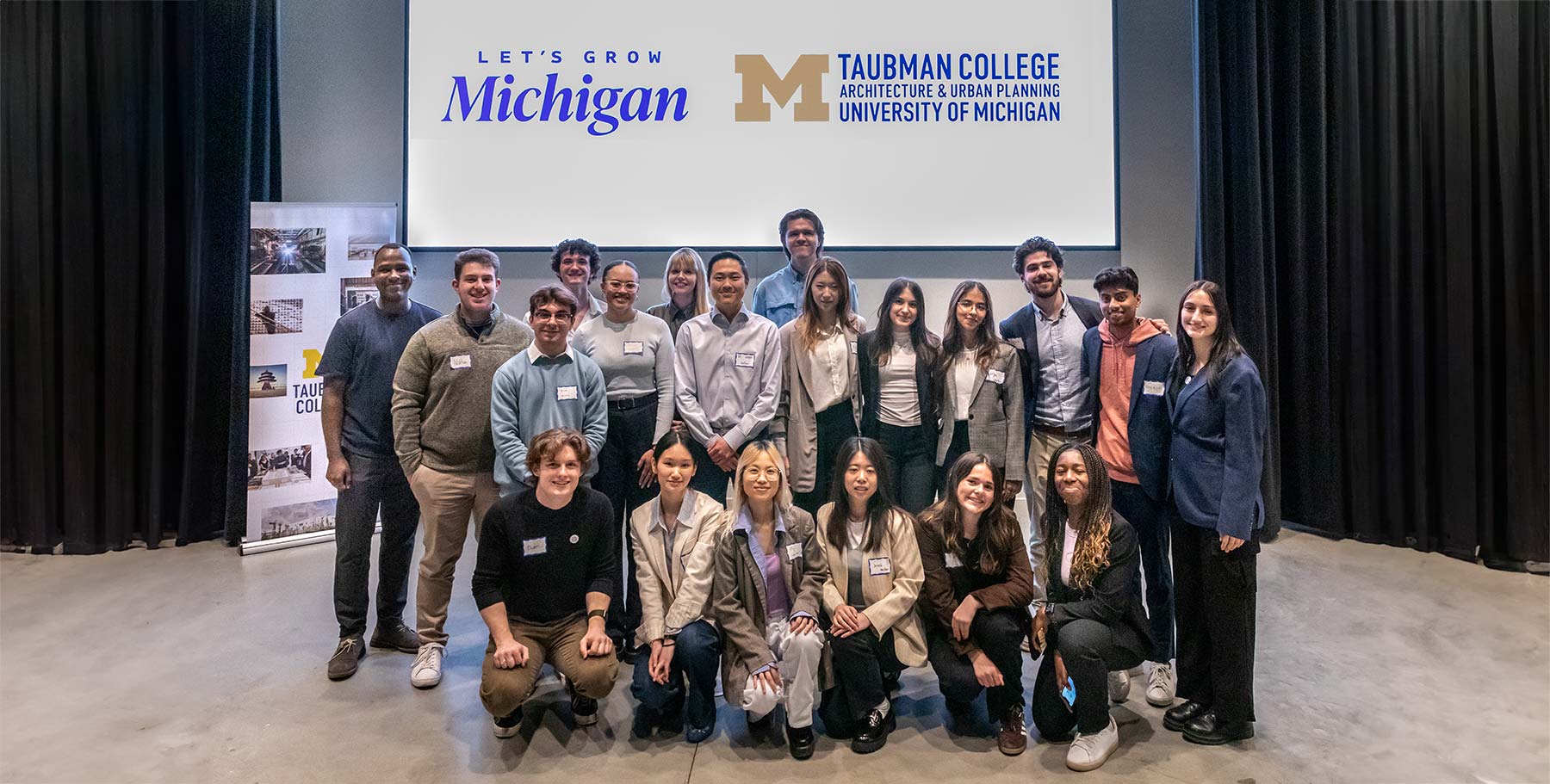The 2020 ACADIA conference was the third that Misri Patel has attended. The formats have been different — two were in person; this year’s was virtual — and her level of involvement has been different, too: from her first time as a student listening and making connections to now being a second-time presenter as a recent graduate.
But there has been a common thread in all three conferences: “It has truly been a dynamic experience,” said Patel, M.S. ’19. “It’s an honor to hear your name being called out with our outstanding and collaborative faculty. It has not only strengthened the concepts I learned as a student but also made me more confident as a young researcher and educator.”
Patel was one of five Taubman students or recent graduates who presented during the virtual event, “Distributed Proximities,” held October 24–30, 2020. She presented as an author on the paper “Unknowing: Removing precise definitions can inform discoveries along a spectrum,” which was written and disseminated along with Associate Professors Catie Newell and Wes McGee, and Zackery Belanger from Arcgeometer, through “Activating Curvature,” a project funded by Guardian Glass.
Within the territory of research, panes of glass are cut and placed into a custom kiln, where they are heated to slump into the third spatial dimension. This has visual consequences, and it also shifts acoustic properties from reflective into a grey area. The shaped panels create a continuous change of form and resultant acoustic properties. “Our paper explores the productive value of abandoning precise definitions,” said Patel. “Questioning them — recognizing their limitations, gaps, or imperfections — can be a successful project unto itself.”
Each year, Taubman College students in the Digital and Material Technologies (DMT) program participate in the ACADIA conference. Short for the Association for Computer Aided Design in Architecture, ACADIA is an international network of digital design researchers and professionals that facilitates critical investigations into the role of computation in architecture, planning, and building science, encouraging innovation in design creativity, sustainability, and education.
“It was a really great opportunity to present my own research, while also engaging in thoughtful discussions with my peers,” said Ryan Craney, who presented “Engrained Performance: Performance-Driven Computational Design of a Robotically Assembled Shingle Facade System,” based on research he conducted under the guidance of Assistant Professor Arash Adel during his 2020 DMT capstone course. “The ACADIA conference is full of exciting work and bright minds, and I am already looking forward to next year’s conference,” Craney added.
Engrained Performance presents a novel fabrication-aware and performance-driven computational design method that facilitates the design and robotic assembly of a wood shingle façade system. “Our research merges computational design, robotic timber assembly, and building envelopes optimization into a seamless digital design-to-fabrication workflow,” said Craney.

From “FORM{less} Robotically Thermoformed Molds for Concrete Casting” by Mackenzie Bruce, Gabrielle Clune, Ryan Culligan, Kyle Vancise, Rahul Attray, Wes McGee, and Tsz Yan Ng.
Other student work presented at ACADIA 2020:
“Additive Thermoplastic Formwork for Freeform Concrete Columns”
(from the DMT Material Engagement course with Mania Meibodi)
Authors: Assistant Professor Mania Meibodi, Chris Voltl, and Ryan Craney
This paper reviews the opportunities and challenges of using 3D-printed thermoplastic formwork for fabricating custom concrete elements using multiple thermoplastic materials. It cross references and investigates PETG, PVA, and PLA (as well as combination of PLA-PVA) as materials for 3D printed concrete formwork, produced using robotic pellet extrusion and filament-based 3D printing methods.
“FORM{less} Robotically Thermoformed Molds for Concrete Casting”
(from the Topology+ thesis section with Tsz Yan Ng)
Authors: Mackenzie Bruce, Gabrielle Clune, Ryan Culligan, Kyle Vancise, Rahul Attray, Associate Professor Wes McGee, and Associate Professor Tsz Yan Ng
FORM{less} focuses on the creation of complex thinshell concrete forms using robotically thermoformed plastic molds. This process allows for the creation of complex geometries while reducing the amount of waste used for concrete casting.

“Engrained Performance: Performance-Driven Computational Design of a Robotically Assembled Shingle Facade System,” by Ryan Craney and Arash Adel.
Taubman College’s involvement with ACADIA extends well beyond the students. Faculty also present at the conference, including, this year, Sean Ahlquist, an associate professor of architecture who won the 2020 ACADIA Innovative Research Award of Excellence. Ahlquist — a leader in exploring the architectural possibilities of knitted structures by using state-of-the-art, large-scale computer numerical control (CNC) knitting machines and bespoke modeling software — was chosen for his ongoing research in studying the potential for advanced computation and fabrication to benefit human behavior, inclusion, and community.
In addition, Kathy Velikov, associate professor of architecture, has served as the organization’s president for two terms. “I would best describe ACADIA as a ‘community of practice,’” Velikov said. “It is a dynamic and continually evolving community, with the annual conference being a forum for sharing early work-in-progress explorations, experiments, iterations, and prototypes that operate at the forefront of computational design.”
In 2019, the DMT program received the Innovative Academic Program Award of Excellence from ACADIA. “The Taubman College Master of Science in Digital and Material Technologies has emerged as a leader in the education of the next generation of digital designers and researchers in the field,” the jury noted when announcing the award. “The faculty involved in the program have been at the forefront of academic and research innovation.”





